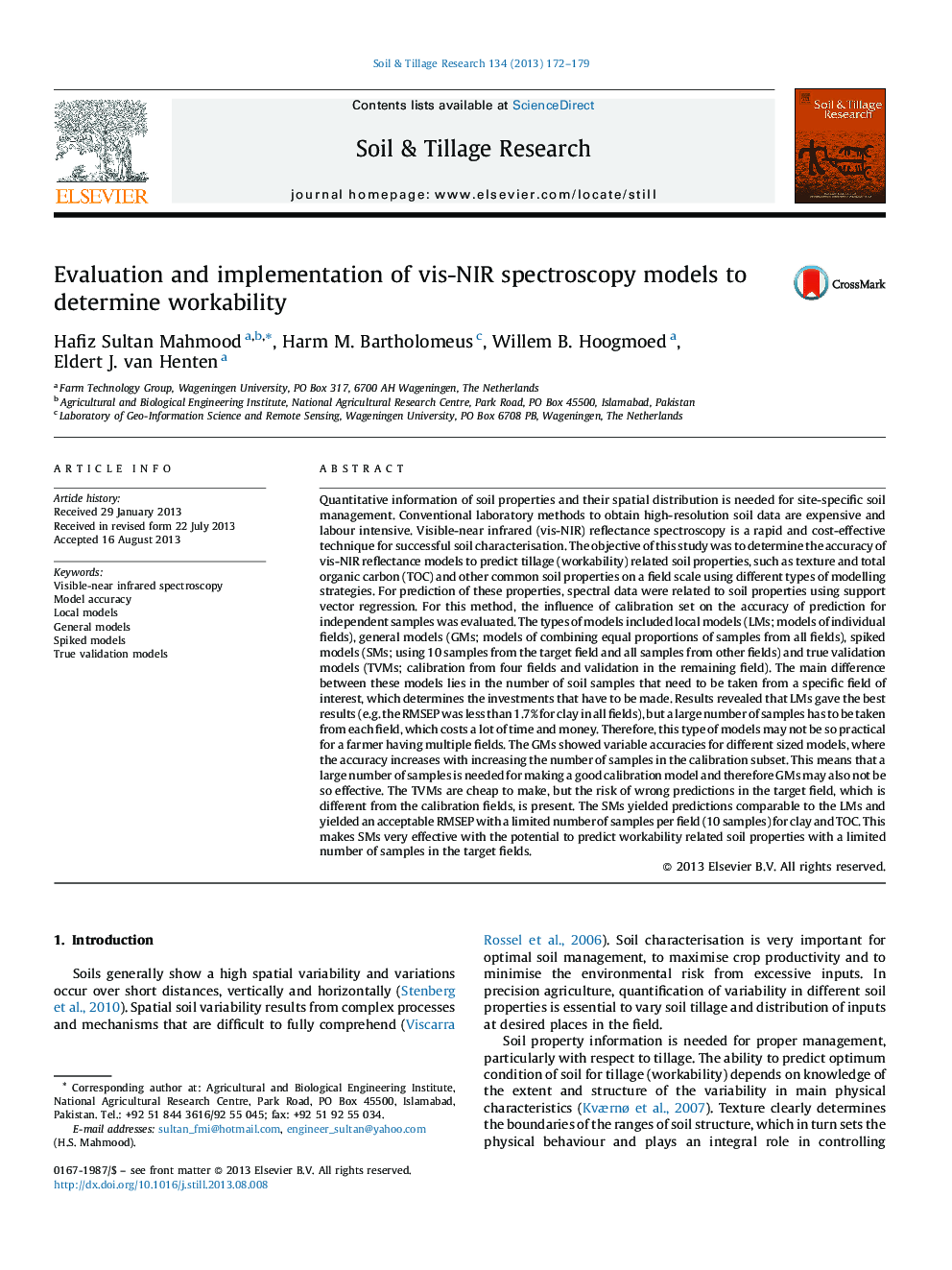| کد مقاله | کد نشریه | سال انتشار | مقاله انگلیسی | نسخه تمام متن |
|---|---|---|---|---|
| 305813 | 513052 | 2013 | 8 صفحه PDF | دانلود رایگان |

• We test the accuracy of different vis-NIR models to predict soil properties.
• We use local, general, spiked and true validation models in five fields.
• Local models predict tillage properties well, but more effort is needed in sampling.
• Spiked models yield results comparable to local models with a little lower accuracy.
• Spiked models of vis-NIR spectroscopy should be used in field level studies.
Quantitative information of soil properties and their spatial distribution is needed for site-specific soil management. Conventional laboratory methods to obtain high-resolution soil data are expensive and labour intensive. Visible-near infrared (vis-NIR) reflectance spectroscopy is a rapid and cost-effective technique for successful soil characterisation. The objective of this study was to determine the accuracy of vis-NIR reflectance models to predict tillage (workability) related soil properties, such as texture and total organic carbon (TOC) and other common soil properties on a field scale using different types of modelling strategies. For prediction of these properties, spectral data were related to soil properties using support vector regression. For this method, the influence of calibration set on the accuracy of prediction for independent samples was evaluated. The types of models included local models (LMs; models of individual fields), general models (GMs; models of combining equal proportions of samples from all fields), spiked models (SMs; using 10 samples from the target field and all samples from other fields) and true validation models (TVMs; calibration from four fields and validation in the remaining field). The main difference between these models lies in the number of soil samples that need to be taken from a specific field of interest, which determines the investments that have to be made. Results revealed that LMs gave the best results (e.g. the RMSEP was less than 1.7% for clay in all fields), but a large number of samples has to be taken from each field, which costs a lot of time and money. Therefore, this type of models may not be so practical for a farmer having multiple fields. The GMs showed variable accuracies for different sized models, where the accuracy increases with increasing the number of samples in the calibration subset. This means that a large number of samples is needed for making a good calibration model and therefore GMs may also not be so effective. The TVMs are cheap to make, but the risk of wrong predictions in the target field, which is different from the calibration fields, is present. The SMs yielded predictions comparable to the LMs and yielded an acceptable RMSEP with a limited number of samples per field (10 samples) for clay and TOC. This makes SMs very effective with the potential to predict workability related soil properties with a limited number of samples in the target fields.
Journal: Soil and Tillage Research - Volume 134, November 2013, Pages 172–179